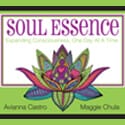A Perspective of Eastern Medicinal Herbal Formulations
The majority of the world’s population has used herbal treatments as front line medicine before recorded history. In some parts of the world, it is still the most widely utilized medical system today.
Herbs are the medicinals in holistic medicine. Chinese herbs are specifically used to create decoctions or “teas” and are a very powerful part of healing dis-ease. Herbal decoctions can also be given in “tea pills”, tinctures, and granules or as an external patch, compress or bath. Chinese herbal medicine uses several hundred substances, mostly of plant origin (roots, seeds, flowers, twigs, crystals, bones and barks). These are hardly ever prescribed singly. They are combined into a formula, which usually contains between 8 and 12 ingredients. It is the “herbal synergy” that seems to be the strength behind Chinese herbal formulas. The exact combination is adjusted to suit the patient’s individual condition, and is likely to be altered as the treatment progresses to take account of changes that have occurred. It is therefore a very flexible system, which can be closely developed to the needs of the patient. Adverse reactions to herbs are extremely rare and are negligible when compared to those commonly produced by pharmaceutical drugs.
The methodology behind an herb’s function, indication, contraindication, preparation and use are numerous. Herbs are categorized according to their properties, taste, temperature and their “herbal synergy” is created by using a dominant (chief herb) with a deputy, assistants and envoy herbs in a combination to produce a better effect on one particular organ or condition. The chief herb “rules” the prescription and has the primary effect on the disease condition. The deputy and assistant herbs help to synergistically increase the effect of the chief herb, to treat an illness, as well as, “supervise” the function of other herbs.
Herbs are categorized according to their properties. By doing this, it allows an herbologist to more efficiently utilize the power behind an herb to its fullest. This is why the “herbal synergy” that seems to be the strength behind Chinese herbal formulas, is the major difference behind any other form of herbal medicine. The exact combination of herbs can constantly be adjusted to suit the patient’s individual condition, and is likely to be altered as the treatment progresses to take into account the changes that have occurred.
A Differential Diagnosis of Symptoms
The Eastern approach to treating any disorder is by treating the root of the problem. Branch treatments (treating just the symptoms one sees) are the equivalent to putting a band-aid on a broken bone. Treating perimenopause and menopause requires an in depth look at signs and symptoms, past medical history, family medical history and every symptom or sign, even if it does not seem related to the current problem.
When differentiating such symptoms, it is important to realize which are the most dominant set of symptoms and which are secondary. Not everyone would have all symptoms in one category. They may have a few in one category and a few in another. The more dominant or most symptoms from one category is usually the predominant deficiency. Once you can identify the more predominant deficiency then it is easier to pinpoint remedy-specific formulations to treat and tonify the situation.
Click HERE to Connect with your Daily Horoscope!
Andrew Pacholyk MS, L.Ac. Alternative medicine and therapies for healing mind, body & spirit! http://www.peacefulmind.com
OMTimes Magazine is one of the leading on-line content providers of positivity, wellness and personal empowerment. OMTimes Magazine - Co-Creating a More Conscious Reality










